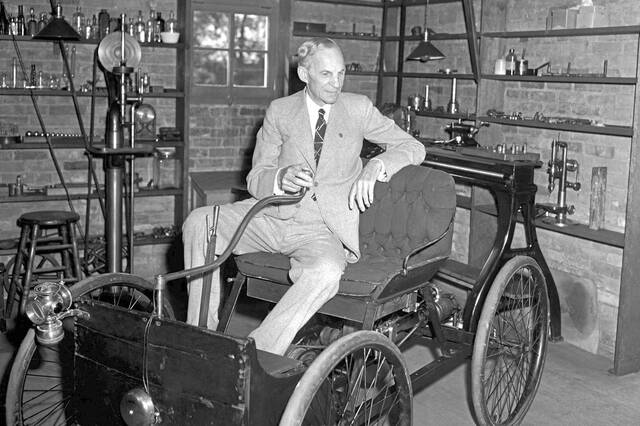https://naviga.triblive.com/local/valley-news-dispatch/remember-when-henry-ford-nearly-opened-windshield-autoglass-plant-in-east-deer/
Remember When: Henry Ford nearly opened windshield, autoglass plant in East Deer

Henry Ford — yes, that Henry Ford — had big plans for the Alle-Kiski Valley a century ago.
In fact, were it not for a couple of negative events, it could have changed the trajectory of history in this area.
Ford, the forward-thinking industrialist that he was, had plans to build a windshield and autoglass plant in the Glassmere section of East Deer.
The stage was set by another person named Ford, specifically Capt. John B. Ford. While not related, John B. Ford is the man for whom Ford City was named.
John B. Ford discovered that the sand along the banks of the Allegheny River was conducive to glassmaking. He set up the original plant that became Pittsburgh Plate Glass Co. in Ford City and, in 1883, one in the Creighton section of East Deer.
About a mile south of the Creighton plant sat the Allegheny Glass Co. in the Glassmere section of East Deer. Henry Ford bought Allegheny Glass on Feb. 6, 1923, and hoped to expand it enough to hire 2,000 workers.
Why would Henry Ford want to build a glass plant nearly 300 miles from his base in Dearborn, Mich.?
Plans at the time called for a canal to be built in the upper Allegheny River, through French Creek in Meadville and an inland waterway on to Lake Erie. Ford’s glass products could easily be transported by barge to the massive Ford River Rouge plant outside Detroit.
Ford was so sure the canal would eventually be built that he constructed about 20 model homes in Glassmere to give area residents a sample of what was to come. Ford also bought large pieces of property between Freeport Road and Bouquet Hill.
In fact, the Pittsburgh & Lake Erie Canal Board was set up several years earlier in anticipation of the canal. Civic groups and the media got behind the idea.
Ford tried to low-key a visit to the area with his son, Edsel. But, instead, there were greeting committees and the Tarentum Valley Daily News enthusiastically welcomed the auto magnate.
Ford also visited the American Glass Co. plant in Arnold — affectionately known by residents there as the “Glasshouse.” He also looked at buying the Carnegie Farmland across the river from Freeport in order to build a steel plant. The sky seemed to be the limit.
But various factors, including a lack of funding for the canal and the onset of the Great Depression, stood in the way of the canal being dug. Tired of waiting and wanting to cover his bases, Ford added a glass plant at River Rouge in 1927.
In the early 1930s, Ford sold the Glassmere plant with about 1,000 workers to United Iron and Metal Co., but did not foreclose on any of the homes he built. United Iron and Metal went out of business, and ownership reverted back to Ford.
Tired of paying taxes on an empty building, Ford decided to liquidate the community and enlisted New Kensington Realtor Fred Moran to auction off the properties.
On March 8, 1937, Ford’s dream officially ended, as the properties all were sold within 24 hours by Moran.
Copyright ©2025— Trib Total Media, LLC (TribLIVE.com)
